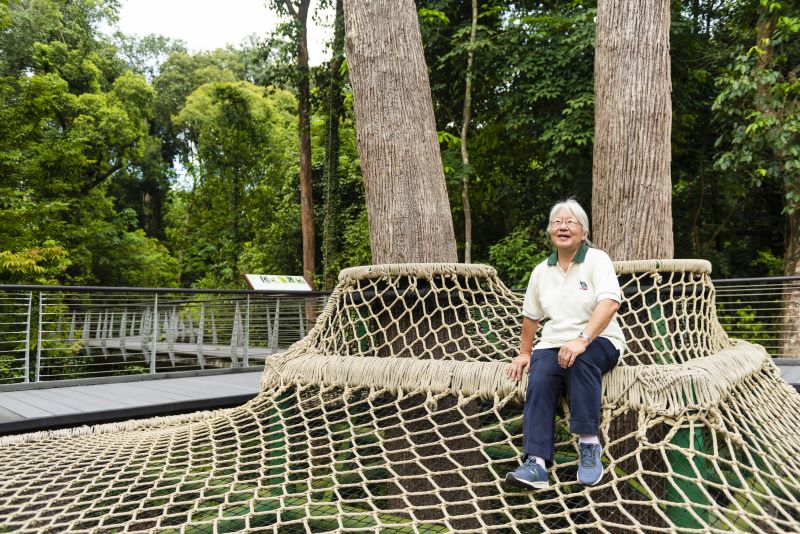Is Singapore a biophilic city?
“We have actually been a biophilic city all these while,” says Dr Lena Chan, senior director, International Biodiversity Conservation Division, National Parks Board (NParks) on the shift in focus towards Singapore as a biophilic city in the recent years. “A city does not turn biophilic on a planned day. Like all things natural, it evolves. All the efforts moving Singapore from a garden city to a city in a garden were actually leading us up to a biophilic city. We always had the DNA in us to be green and the principles were already in place. We simply added elements as we went along and became more and more biophilic,” she says.
Lena has been working tirelessly behind the scenes for decades to protect and enable plants and animals to thrive in Singapore, managing a delicate balance between conservation and urban development. We catch up with her at the Singapore Botanic Gardens’ Learning Forest on why cities need to embrace nature and why individuals need to relearn and understand what it means to see, feel and experience the rich nature all around us.
How are biophilic cities different from green cities?
Originating from the word 'biophilia' (which means 'loving living things'), biophilic cities live in harmony with nature. Multidimensional with multiple plant species that support other species of animals and living things, they are a rich mosaic of forests, gardens, streams and marine environments linked by ecological corridors. Even their built infrastructure and buildings are biodiversity-friendly.
As a result, these cities have more liveable, sustainable and resilient urban communities. They understand the benefits of connecting with nature, and what natural ecosystems bring to physical, mental and psychological health.
Will every biophilic city turn out looking the same?
Depending on the kind of species that thrive in the city, coupled with cultural factors, each city will have its own special connection with plants and animals, and therefore their own biophilic interpretation and expression. Singapore's biophilic narrative might be closely tied to our food culture, for example. Since biophilic cities also have an element of 'I'm involved and I want to make it work', it is very important that the general public connects with the narrative.
Achieving a successful biophilic city is a large-scale effort. In Singapore, who are the stakeholders and parties involved that are particularly important?
A biophilic city is extremely comprehensive so it is difficult to create a successful one if efforts are approached in a piecemeal manner. It is not a single purpose. Everyone is a major stakeholder. Every government agency should be involved, collaborating and cooperating synergistically with the private sector, academic institutions and the public to create, design and sustain a biophilic city.
NParks has introduced biophilic design typologies, such as the Learning Forest at the Singapore Botanic Gardens. Why are these typologies important?
As Singapore becomes more urbanised, it is essential that our infrastructure (besides natural reserves, parks and roadsides) should also feature natural elements. These biophilic design typologies are important because they ensure the principles of biophilia and ecology are consciously and intentionally incorporated into our infrastructure and included right from the beginning.
Read the complete article here





